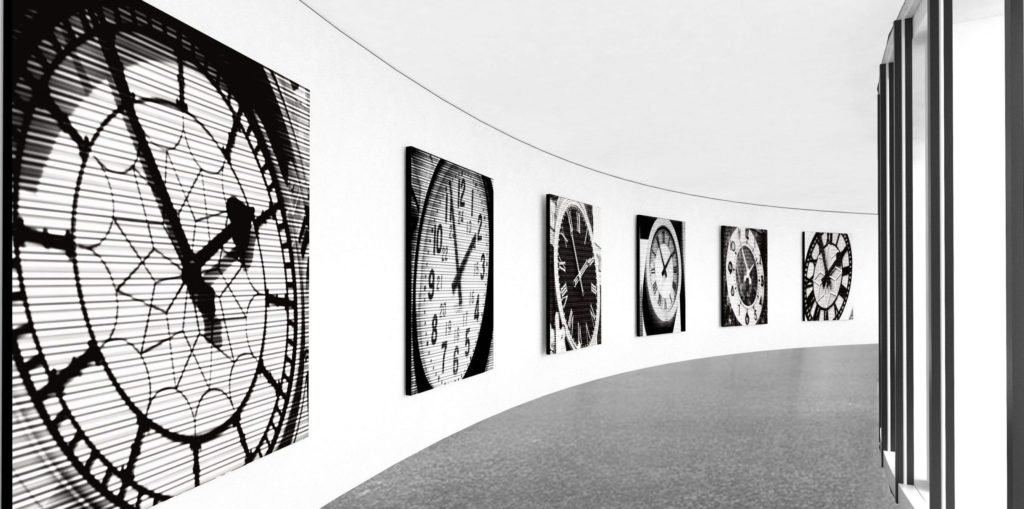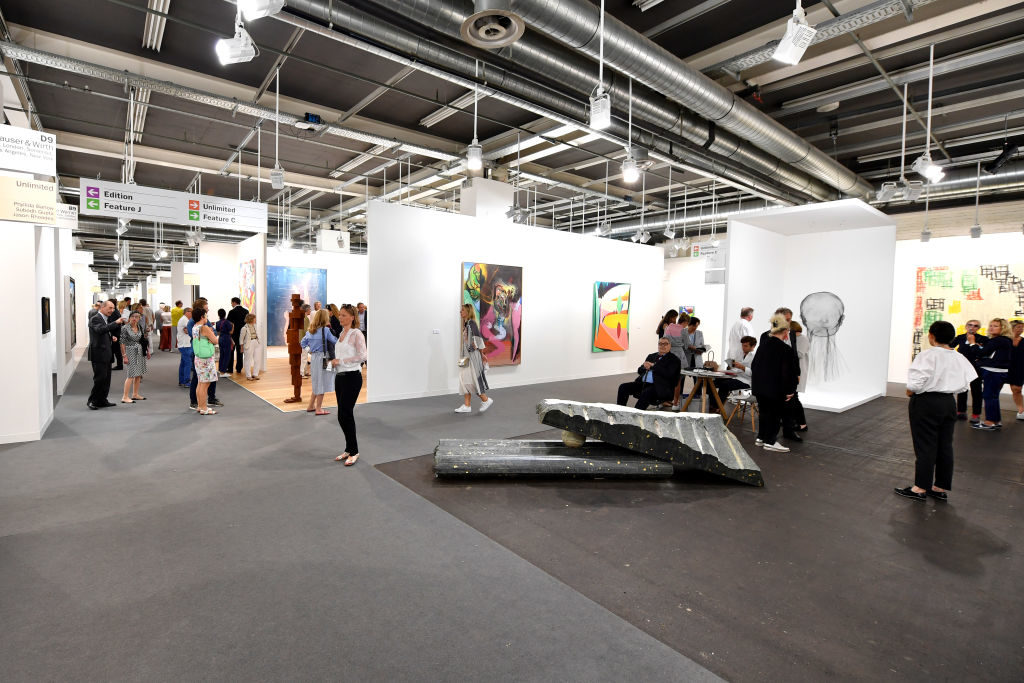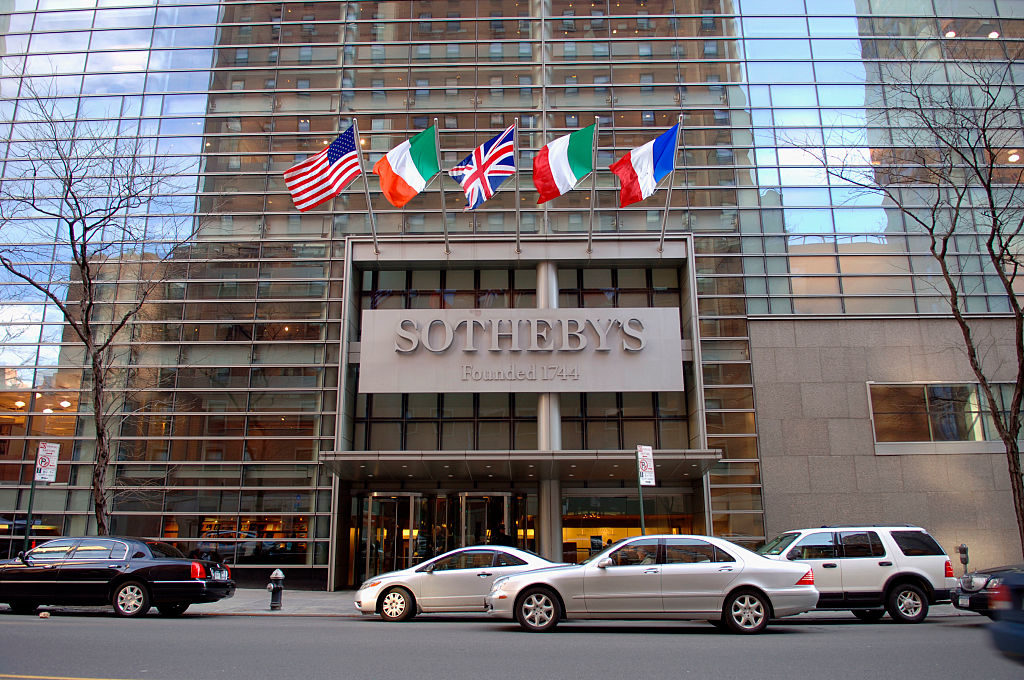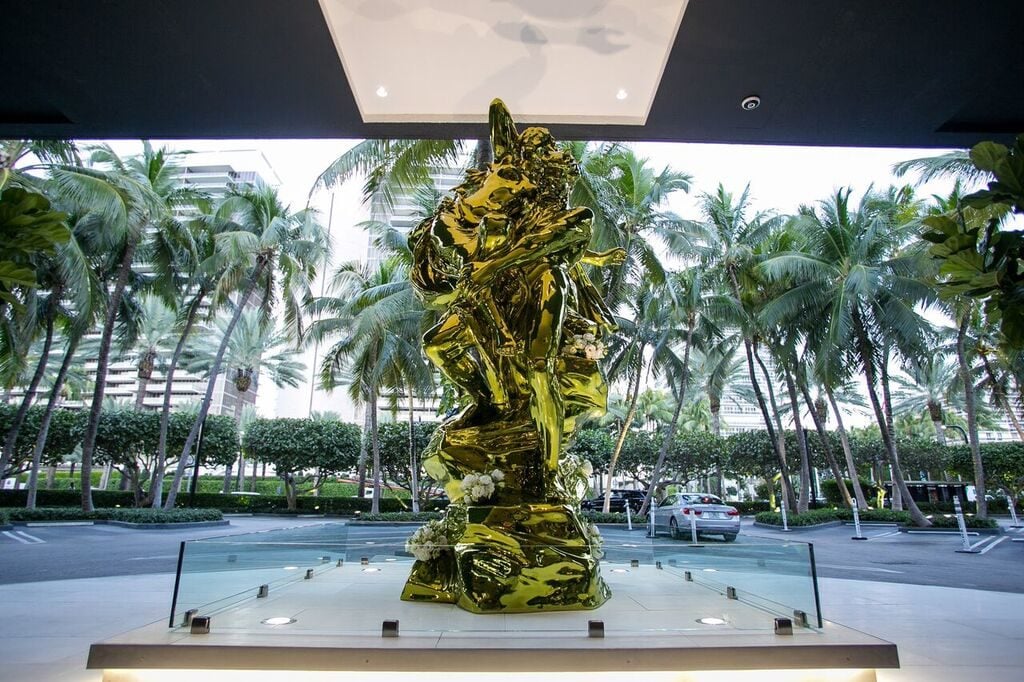Analysis
Eight Hair-Raising and Highly Specific Predictions for the Art Market in 2018
What will the coming year hold for art fairs, galleries, and the art business in general? Tim Schneider ventures a few prognostications.

What will the coming year hold for art fairs, galleries, and the art business in general? Tim Schneider ventures a few prognostications.

As we enter the new year in a moment of rampant cultural transformation and across-the-board uncertainty, I wanted to put together a set of predictions for the next 12 months in the art market. However, since I’m a freak about specificity and accountability, I tried hard to avoid armoring myself in generalities. Instead, here are eight detail-driven calls that we will all be able to score by their accuracy—or lack thereof—by the end of December. Here’s hoping that, no matter the result, they’re more valuable than if I just gas-bagged about abstract trends.

The press preview at Art Basel 2017 in Switzerland. Photo: Harold Cunningham/Getty Images.
It’s crucial to recognize that the worryingly high attrition rate for mid-tier galleries—which ARTnews made vividly apparent last year with a ghastly partial survey of the carnage since 2012—does not play out in a vacuum.
The reality is that the application, exhibitor, and booth-customization fees from mid-tier galleries also comprise the main revenue stream for mid-tier fairs (like, say, Untitled or Artissima), which rely on them in the same way an indie movie house leans on the Sundance circuit.
If these galleries continue to lose financial altitude, making them less capable of paying these fees, it’s not as if ticket sales will be able to do the heavy lifting to push organizers into the black either—in part because mid-tier events don’t draw anywhere near the crowds of A-list fairs. (For reference, a 2015 round-up by Skate’s Art Market Research reported attendance of nearly 75,000 at Art Basel, versus just 20,000 for Volta New York.)
And big-time advertisers like BMW—a major funder of Art Basel—tend not to air-drop pallets of cash onto less visible fairs that don’t move the needle among the broadest public, let alone cross over into pop culture. No disrespect, but Drake is not flying into the Bay to do a one-night-only show during this year’s edition of FOG.
Something has got to give. If the galleries comprising the mid-tier fairs’ main revenue source really have been getting slaughtered as mercilessly as most of us think, then mid-tier fairs are due for a reckoning, especially as alternative initiatives like Condo and Artist/City at least suggest the potential viability of reaching new collectors in better ways. I’m going to guess that said reckoning will arrive—or start to, anyway—over the next 12 months.
True, a handful of mid-tier fairs—Independent prime among them—have previously gone rogue and admitted a few exhibitors who were bold enough to ash the traditional requirement of maintaining a permanent space. But heavy-hitters like Art Basel, Frieze, and even the Armory Show haven’t flinched on their stance. In fact, Marc Spiegler essentially renewed his vows to the importance of physical galleries in a talk just over a month ago—at least, for the time being.
We can debate whether the reasons are more philosophical or financial. (To the latter: If you’re a fair organizer, why risk pissing off your most consistent and lucrative clients, i.e. galleries that maintain actual galleries, by giving a pass to smaller competitors who aren’t paying the same costs they are?) But the reasons are real, strong, and not going anywhere this year.
Why does this matter? If what I call “unspaced dealers” continue to get shut out of one of the main sales channels for their profession, then that restriction arguably curb-stomps one of the primary alternative models that mid-tier galleries have been looking toward for possible salvation. And that damage reverberates throughout an industry facing genuine structural problems.

Exterior of Hauser & Wirth, Los Angeles. Photo: courtesy of Hauser & Wirth.
Rising overhead costs aren’t the only reason mid-tier galleries are struggling, but they’re a substantial one. And the easiest way to defray those costs is to share them with someone similarly afflicted. It’s the same calculus that I suspect compels a bunch of New York couples to move in together before the state of the relationship legitimately merits it.
Zach Feuer and Joel Mesler tried it, although the venture faded out less than two years after its debut in May 2015. Other galleries have dipped their toes in the water by teaming up for art-fair booths or other projects, such as Marianne Boesky, Dominique Lévy, and Sprüth Magers sharing a booth dedicated to Frank Stella at Frieze London in 2016. The grander, more thoroughgoing solution makes too much sense to go another calendar year without someone trying it again.
To the second half of this prediction: In every other consolidating industry, major players interested in expanding have had the option to either grow from within or take the faster, easier route of using some of their excess capital to buy smaller competitors already filling the perceived holes in their business profile.
We’ve already seen some examples of this in the gallery/dealer sector: Esther Schipper acquiring a controlling stake in Jörg Johnen’s gallery in 2015, and David Zwirner folding London dealer Gérard Faggionato into his larger empire the same year. Suffice it to say that this movie, like so many others in our franchise-driven era, is due for a sequel soon.
Women have already come forward to allege that major figures in every other sphere of the industry have opened their robes before the altar of Harvey Weinstein. For art fairs, see Benjamin Genocchio. For museums, see Jens Hoffmann and Gavin Delahunty. For publishers, see Knight Landesman.
Does anyone believe that gallery ownership is some kind of talisman that prevents men in positions of power from abusing their leverage over women in the same ways as in seemingly every other sector of every other industry? You’d have an easier time convincing me that you could cure Alzheimer’s using healing crystals.
However, there’s a fundamental business difference between the cases we’ve seen reported so far and the one at the crux of this prediction: In those above, the institution has been bigger than the individual. The Armory Show, the Jewish Museum, Artforum—all of these entities could merely replace the alleged culprit and move on.
But what do you do when the alleged culprit literally IS the business?
Short answer: You have to shut it down. It’s the only way for the alleged abuser to “reflect on their actions,” “re-examine themselves,” “spend more time with their family,” or whatever bullshit euphemism feels like the best foxhole to duck into until the smoke (and/or fire) of the scandal passes by.
The art market is a multibillion-dollar industry. But it’s also still a clubhouse. Collectors, dealers, and curators talk (read: gossip). A LOT. They know who bought what from whom more often than most people on the outside realize.
We appear to be at an extraordinary moment in history, one where people have determined that associating with toxic masculinity is no longer acceptable—or at least too risky to chance. So, if/when this scandal breaks, collectors will have to ask themselves whether they can go to their next cocktail party, gala, or charity auction when their peers in the room might very well know that they just bought art from an ogre in the middle of a species-wide purge. Fingers crossed the answer is “no.” And if I’m right, then there’s nothing for a degenerate dealer to do but close up shop.

Sotheby’s New York. Photo: Richard Levine/Corbis via Getty Images.
This general trend is one I suspect we’ll see more of, across sectors. But the auction houses seem like a good place to start—especially since we already have a precedent via the $250,000 Sotheby’s Prize, a grant awarded annually (and sometimes split up, based on this year’s dual recipients) to help bankroll, in Allan Schwartzman’s words, thematic museum exhibitions that are “expensive… take longer to organize, and… are hard to fund.”
The important point is that contributions like this are not charity. They’re investments. The market always needs new (re)discoveries. Scholarly value aside, these grants are tangible ways to begin establishing or expanding markets for overlooked artists and movements that the granting entity can then literally capitalize on for years to come. (And by the way, that’s a good thing for art history!)
Every time the world economy crashes, auction houses dust off their talking points about fiscal responsibility and the wrong-headedness of their older, freer-spending policies. Then, every time we experience a sustained recovery—at least, at the apex of the economic pyramid—they go right back to approving big guarantees, especially now that it’s become de rigueur to offload some of the risk to third parties. It’s like your wildest friend in college swearing off liquor after they woke up to discover they’d spray-painted their entire dorm room in their own stomach acid, only to find them sucking down shots again a few days after the hangover wears off.

Jeff Koons, Pluto and Proserpina. Courtesy Bal Harbour Shops and Oceana Bal Harbour.
In 2016, UTA opened a gallery (that they claim isn’t a gallery, but, you know…). Less than a week after announcing a “strategic partnership” with Endeavor (now a majority stakeholder in the brand), Frieze generated a proposal to found a massive arts district in the South Bronx. Yayoi Kusama’s Infinity Mirrored Rooms are blazing a trail of ticket sales and dating-profile selfies across the museum landscape, and she opened her own museum in Tokyo last fall. Meanwhile, Kusama’s branded-artist peers are increasingly willing to forgo consistent gallery representation in favor of leveraging their own star power directly with consumers.
Basically, agencies and major artists alike have grander ambitions than many may have realized. What my colleague Ben Davis described as Big Fun Art is here to stay. Why should would-be disruptors like the Big Three agencies (CAA being the third) and spectacle-fluent, profit-conscious artists let the spoils go to major museums and upstart talents like Meow Wolf?
In an industry where having a functional website still qualifies as a competitive edge, all but a few of the biggest outfits are kidding themselves about whether they’re doing enough to harness the potential of tech—creatively or commercially.
Last year’s cyber-crime scandal revealed how stagnant, if not regressive, most galleries still are on even the basics of digital security. We see new online auction highs almost every year, but few significant improvements in the platforms themselves. Hardly anyone even bothers to meaningfully advertise online, preferring instead to keep pumping money into print. (PRINT! In 2018!)
In contrast, what I mean by a “structural investment in tech” is an initiative that transforms—even in some boring day-to-day aspect—how the entity in question does business. Something worth formally announcing, even if wonks like me are the only people who get excited about it at first. Think: A gallery hires a developer to create a virtual-reality “back room” accessible by key collectors; an art fair strikes up a partnership with a leading cybersecurity firm; an auction house curates a selling exhibition exclusively showcasing time-based or interactive new media.
Long story short: Producing a few isolated VR artworks per year does not mean that galleries, auction houses, or fairs are appropriately invested in innovation overall. But it can be enough to create a mirage. Regrettably, I’m going to predict that almost no one near the top of the hierarchy wises up to the illusion before we’re watching the ball drop in Times Square again.
That’s all I’ve got for now. Again, I’ll come back to these predictions at the year’s end to evaluate where I was right, where I was wrong, and why—at least, assuming an international Button-Measuring Contest doesn’t end civilization before then. But hey, happy new year!